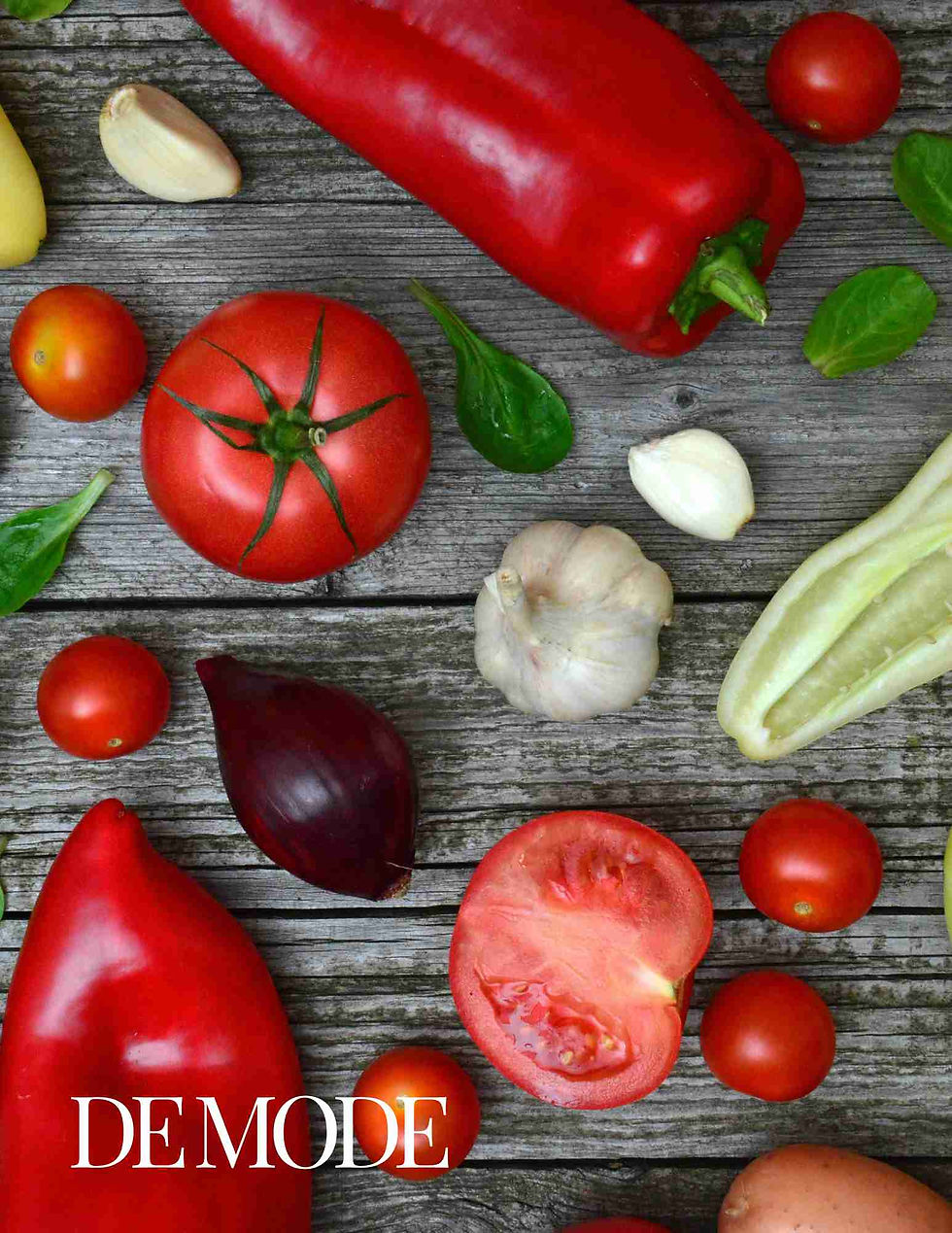"SEASONAL EATING - HOW TO USE FRESH INGREDIENTS IN YOUR COOKING": DE MODE GLOBAL
- DE MODE

- Apr 18, 2024
- 3 min read
ORIGINALLY PUBLISHED IN DE MODE | FOOD
Article Published on: 18TH APR 2024 | www.demodemagazine.com
Seasonal eating is a culinary approach that emphasizes using fresh, locally sourced ingredients that are in season at a particular time of the year. This approach not only supports local farmers and promotes sustainability but also ensures that you're getting the freshest, most flavorful produce available. In this article, we'll explore the benefits of seasonal eating and provide tips on how to incorporate fresh ingredients into your cooking.

The Benefits of Seasonal Eating
Freshness and Flavor One of the most significant advantages of seasonal eating is the superior flavor and freshness of the ingredients. When fruits and vegetables are harvested at their peak ripeness, they tend to be more flavorful and nutritious. Produce that has been transported long distances or stored for extended periods can lose some of its flavor and nutritional value.
Nutritional Value Seasonal fruits and vegetables are often higher in nutrients compared to their off-season counterparts. Studies have shown that produce harvested in season contains higher levels of vitamins, minerals, and antioxidants. Plus, since seasonal produce is fresher, it's more likely to retain its nutritional value.
Environmental Benefits Eating seasonally can also have positive environmental impacts. Locally sourced produce typically requires less transportation, reducing carbon emissions associated with long-haul transportation. Additionally, supporting local farmers who practice sustainable farming methods can help protect biodiversity and promote soil health.
Cost-Effectiveness Seasonal produce is often more affordable than out-of-season produce because it doesn't require as much effort to grow and transport. Farmers can also pass on savings to consumers when they don't have to spend as much on storage and transportation costs.

Tips for Using Fresh Ingredients in Your Cooking
Know What's in Season The first step in embracing seasonal eating is knowing what fruits and vegetables are in season in your region. Websites, apps, and local farmers' markets can be excellent resources for finding information on seasonal produce. Keep an eye out for signs at your local grocery store or supermarket indicating which items are in season.
Plan Your Meals Around Seasonal Produce Once you know what's in season, plan your meals accordingly. Incorporate seasonal fruits and vegetables into your recipes to make the most of their flavor and nutritional benefits. For example, use fresh berries in the summer for salads, desserts, or smoothies, and opt for root vegetables like squash and sweet potatoes in the fall and winter for hearty soups and stews.
Experiment with New Recipes Seasonal eating provides an excellent opportunity to experiment with new recipes and cooking techniques. Challenge yourself to try new fruits and vegetables that you may not have considered before. Look for inspiration in cookbooks, food blogs, and cooking shows that focus on seasonal and local ingredients.
Preserve the Harvest To enjoy seasonal flavors year-round, consider preserving your favorite fruits and vegetables through canning, freezing, or drying. This allows you to extend the life of seasonal produce and enjoy its nutritional benefits even when it's no longer in season.
Support Local Farmers and Farmers' Markets One of the best ways to embrace seasonal eating is to support local farmers and farmers' markets. Not only will you get access to fresh, locally grown produce, but you'll also have the opportunity to connect with the people who grow your food. Many farmers' markets also offer a variety of artisanal products, such as honey, cheese, and baked goods, made with local ingredients.
Be Flexible and Adaptable While it's essential to plan meals around seasonal produce, it's also important to be flexible and adaptable. Mother Nature can be unpredictable, and some crops may not be as abundant as expected due to weather conditions or other factors. Embrace the variety that each season offers and be open to trying different fruits and vegetables as they become available.

Conclusion
Seasonal eating is a rewarding culinary approach that celebrates the bounty of nature and encourages mindful consumption. By prioritizing fresh, locally sourced ingredients, you can enjoy superior flavor, nutritional benefits, and environmental sustainability in your cooking. Whether you're a seasoned chef or a cooking novice, embracing seasonal eating offers endless opportunities to explore new flavors, support local communities, and nourish your body with wholesome, delicious food. So the next time you're planning a meal or shopping for groceries, consider what's in season and let nature guide your culinary creativity!



Comments